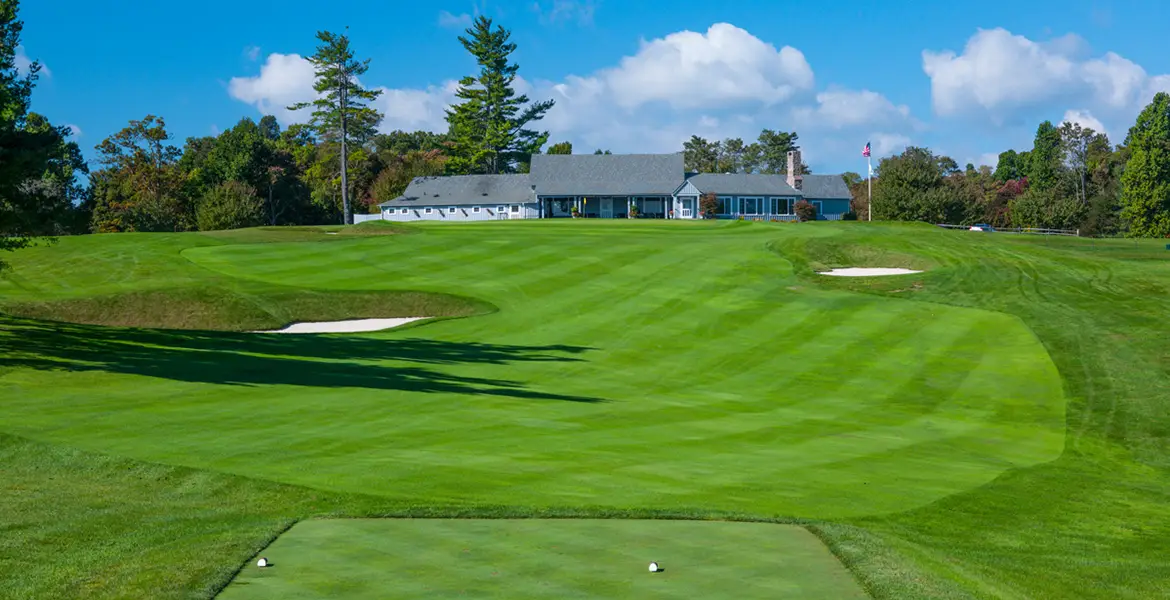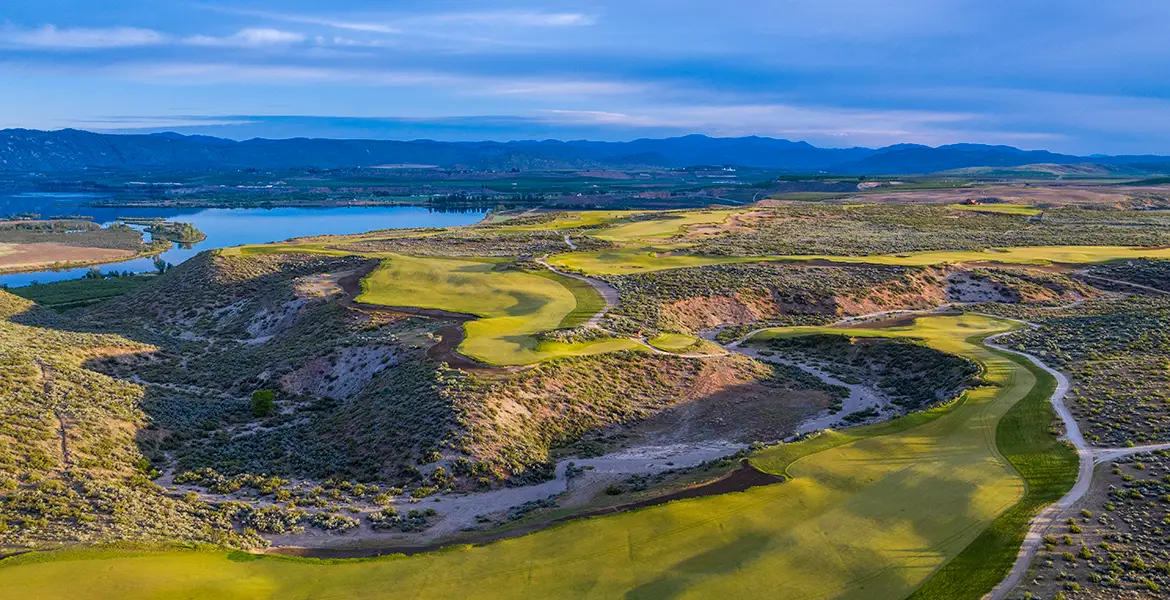By: Frederick C. Klein
Before tackling certain golf courses, players are well-advised to pack some specialized equipment. A trip to the British Isles, for example, requires heavy-duty rain gear. Or, when playing a short, tight, tree-lined track, a 2-iron or utility wood could come in quite handy.
If you’re planning to play Paa-Ko Ridge, a newish public layout just outside Albuquerque, be sure to take a camera. New Mexico is known as “the land of enchantment,” and the course’s high-desert scenery deserves ample space in any scrapbook of glorious golf vistas.
Paa-Ko Ridge sits in the eastern foothills of the Sandia Mountains, Albuquerque’s dominant range. Thick with piñon and juniper, and carved by rocky arroyos, the property provides something as close to a wilderness experience as one can get while chasing the little white ball. The adjective “breathtaking” comes to mind, not only from the views but also from the elevation, which scrapes 7,000 feet.
The place also measures up from a sporting standpoint. Although it’s been open for play only since April of 2000, it already has made several of the national rankings that various golf publications are fond of concocting. It’s scored especially well on scales that take affordability into account: At $44 on Mondays through Thursdays and $61 on other days (plus $18 for optional cart rental), green fees qualify as downright cheap for the standard of quality this course attains.
Paa-Ko Ridge has an egalitarian feel throughout. The course has a well-equipped pro shop and a pleasant grillroom with a shaded, outdoor patio, but no locker room has yet been built, so all players must change shoes at their cars. And if you were to show up for your tee time in denim jeans or a collarless shirt, you’d be as warmly welcomed as if you were sporting a cashmere sweater.
Asked if the club has a dress code, director of golf Warren Lehr says tank tops and gym shorts are frowned upon. Informed by a visitor that a gym shorts-wearing male has just been sighted on the ninth green, Lehr breathes an indulgent sigh. “Unless someone looks bizarre, we don’t say anything,” he allows. “We want to encourage people to play the game, and this just isn’t the most fashionable part of the country when it comes to leisure wear.”
Paa-Ko Ridge aims for accessibility in part because it’s a come-on for a real estate development—and a large one at that. Roger Cox, who came to Albuquerque in 1949 on a University of New Mexico football scholarship and stayed on to go into business, bought a 3,600-acre tract a dozen years ago along State Highway 14 east of the city. He gave it the Indian name “paa-ko,” which means “root of the cottonwood tree,” after a similarly named Tanos Pueblo town whose stone ruins, dating from the 17th century, remain in a fenced field about three-quarters of a mile from the community’s main entrance.
Determined to “get it right,” Cox developed the then-remote property slowly, and it was only five years ago that he decided a golf course would be his project’s centerpiece. An admirer of Ken Dye’s acclaimed Pinon Hills Golf Club in Farmington, N.M., Cox summoned the veteran course architect to handle layout duties.
According to Dye, a Texas native who’s not a member of the Pete Dye clan, the commission was an unusual one. “Roger showed me 1,000 acres of beautiful land and told me to place the holes on whatever parts of it I deemed best,” says Dye. “He said he’d plan his lots around what I did. That sort of opportunity doesn’t arise very often.”
Unusual, too, was the business arrangement between the two men: Instead of a fee, Dye agreed to accept an ownership share of the course, along with Cox and the project’s general contractor. “The upshot,” Dye says, “was that I took on a lot more responsibility over the project than I normally do, and put in many, many more hours. In terms of involvement, I put more into Paa-Ko Ridge than any course I’ve done.”
With the rolling character of the terrain easily lending itself to fairway development and natural rises on the property providing perfect tee locations, Dye had to do very little reshaping. The course that resulted has generous fairways but a multitude of bunkers. Most of the greens are subtly contoured, although a few—such as the four-tiered, nearly 100-yard-long fourth—offer high drama. Many holes are framed by vegetation and topographical features so as to create a sense of isolation.
Though Paa-Ko Ridge measures a man-sized 7,562 yards from its back tees (and 7,195 from the next set up), its length is offset by the fact that well-struck shots fly long in the light desert air. That means players can capitalize at the go-for-broke sixth, a driveable par-4 of 327 yards from the tips. If you do opt for the driver, however, you’ll need to thread your ball through a narrow opening to a green flanked by sand on both sides.
The 640-yard 15th is a fishhook-shaped dogleg that’s narrow for its length and requires three well-placed shots to get home in regulation. A sparkling pond behind the green gives players pause, both for its aesthetics and its penal treatment of overcooked approaches.
Lehr calls the 419-yard 17th hole the course’s “picture-postcard special.” From a 100-foot-high knob that houses the back tees, one can survey the entire course and several mountain ranges, including the snow-capped Sangre de Christos.
Thankfully for visiting golfers, the property’s real estate is developing at a leisurely pace. Of 1,440 lots that have been approved for sale, only about a fourth have been purchased. The 250 homes that have been built all but vanish into the vast acreage as set-back requirements ensure the course’s sightlines and natural beauty will be preserved.
“People come here to get away from urban clutter, and we’re not about to create any of our own,” Cox vows.
That’s welcome news for camera-toting golfers.






